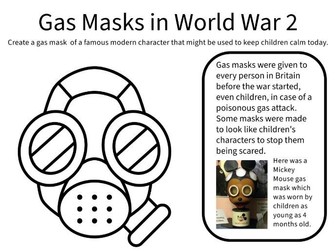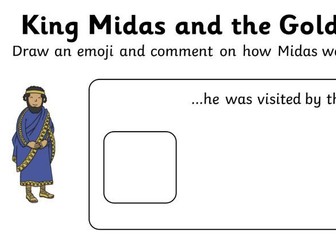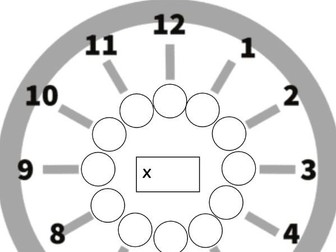World War 2 Gas Mask Design resource
A worksheet which shows children a novelty gas mask that was given to young children during World War 2 to make the situation seem a little less scary. Children will then have the opportunity to design their own gas mask in the style of a popular character from modern times.
Some popular characters could include Bluey, Mr Beast etc.


